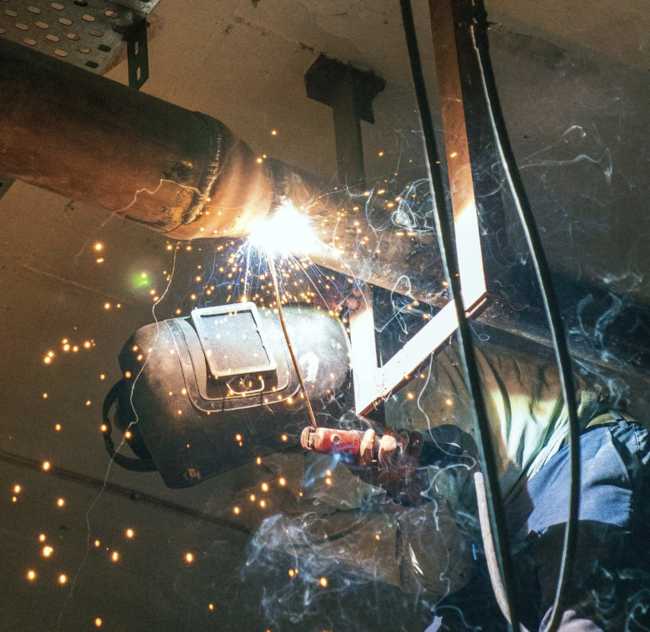Blog
6 Advantages Of Inverter Welders

Welding technology has evolved a lot in the last few decades. Although traditional transformer welding machines are still widely used today, the welding industry is now offering an alternative that relies on inverter technology.
How Does an Inverter Welder Work?
Inverter welding machines convert AC power supply into a lower usable DC output voltage through a series of electronic components. For instance, a 240V AC supply is transformed into a 20V DC output.
In an inverter welder, the frequency of the primary power supply is increased from 50 Hz to 20,000-100,000Hz. This is achieved through the use of electronic switches which turn the power on and off quickly before it enters the transformer.
In contrast to the transformer welding machine where a single large transformer is used to regulate the voltage, inverter welders use an electronic system for voltage regulation purposes.
The main benefit of inverter technology in welding is that it lowers the power consumption which results in reduced energy costs. At the same time, inverter technology generates the same output power as the transformer welder.

Advantages Of Inverter Welders
Compact and lightweight
The use of innovative inverter technology has made modern welders lightweight and more efficient putting them far ahead of the competition. An inverter welding machine offers the same output capacity as a traditional 50 kg transformer-based welder while weighing less and being the size of a small suitcase. This feature makes inverter welders easy to transport to different job sites.
More efficient
Inverter welding machines, like FRONIUS 3000C MULTI-PROCESS SYNERGIC PULSE WELDER available at Lock 8 welding supply store, have an efficiency rate of 80-90%, which is higher compared to traditional transformer-based welders. In traditional welders, the power output is between 50% and 60%. The rest 40% is not emitted to the welder as it is lost through heat dissipation.
Faster cooling
Even though the components in inverter welders can heat up quickly due to their smaller size, they cool down faster than the transformed-based wheelers, as they have a cooling system to protect the parts from overheating.
AC output conversion
Inverter welders convert AC output to low voltage DC power supply meaning they can weld a wide range of different electrodes that work with DCEP and DCEN polarities.
Flexible control
The power supply in inverter-based welders is regulated through electronic components. This gives welders additional flexibility as they can control the output power level depending on the material they need to weld.
Arc control
Inverter-based welders have a higher open-circuit voltage, making it easier to start and maintain the arc. And when you can easily control the electric arc, you can produce better quality welds.
Easy to use when powered by a generator
Sometimes, welders need to be powered by generators when they work in remote locations with no access to the power grid. Old generators are prone to power fluctuations which can affect the arc stability and weld quality. However, this does not affect the inverter welding process. Modern inverter-based welders have transistors that handle the welding machine’s voltage regulation when welders are powered by power generators.
Lock 8, a premium welding supply store, has a variety of inverter welders to choose from. We offer welding machines for sale and rent. We can also set up a demo in our facility in Stoney Creek, Hamilton for you to test the equipment. Give us a call today to learn more about the variety of welding equipment and accessories we offer.



